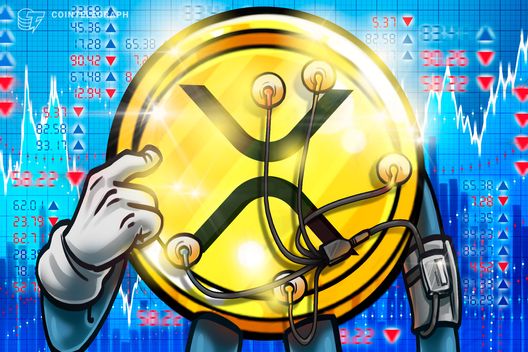- Bitcoin’s volatility halves in 2025, attracting cautious institutional investors.
- Corporate treasuries now hold over 6% of Bitcoin’s circulating supply.
- JPMorgan values Bitcoin $16K below gold parity, implying $126K potential.
JPMorgan Chase is making waves with their latest take on Bitcoin as the investment bank identified that it’s way undervalued compared to gold.
What caught their attention? Bitcoin’s volatility has absolutely plummeted this year. We’re talking about a drop from around 60% earlier in 2024 down to just 30% now, which is at record low levels.
The bank sees this as Bitcoin finally growing up and moving away from being this wild, speculative plaything to something that actually behaves more like a serious investment.
When an asset becomes less volatile, it starts looking a lot more like gold in terms of being a safe place to park money.
Reduced Bitcoin volatility sparks institutional interest
JPMorgan’s latest research shows that Bitcoin’s falling volatility is attracting a lot of new attention from institutional investors. For a long time, the extreme price swings kept cautious investors away.
But now that things have calmed down, more and more investors are starting to see Bitcoin as a real, long-term part of a diversified portfolio.
The report suggests this shift is making Bitcoin more credible, much like traditional assets. It’s solidifying its role as both an investment and a store of value in mainstream markets.
In fact, corporate treasuries now hold more than 6% of the total Bitcoin supply.
Publicly traded companies are also gaining exposure by being included in stock indices, which brings in more money without them having to directly trade crypto.
Following up on that, JPMorgan’s analysis also shows that Bitcoin is undervalued by about $16,000 when you compare it to gold, using models that account for volatility.
Their report puts an implied price target for Bitcoin at roughly $126,000.
This suggests there’s a lot of room for the price to grow as the market catches up to Bitcoin’s new stability and its growing role with institutional investors.
Even though Bitcoin’s price has been resiliently holding above $111,000, this valuation gap means there’s still a lot of potential for it to appreciate further as more people adopt it and its volatility stays low.
Market dynamics and future outlook
In their analysis, JPMorgan also points to a shift in market dynamics. Passive capital, which is the money coming from index funds that buy shares in companies holding Bitcoin, is creating a steady demand.
This helps shield Bitcoin from being driven solely by speculative trading.
They also noted that the 200-day moving average has been a strong technical support level, which reinforces a long-term bullish outlook even with small, short-term price swings.
Still, some indicators show that traders are keeping cautious hedging positions in the options markets. This reflects a more short-term bearish sentiment, even though the overall trend remains positive.
The post JPMorgan says Bitcoin is undervalued compared to gold as volatility plummets appeared first on CoinJournal.


